Assam Assembly Election Results 2021: BJP+ Retains Upper Assam, while Congress-AIUDF Alliance Works Well in Lower Assam
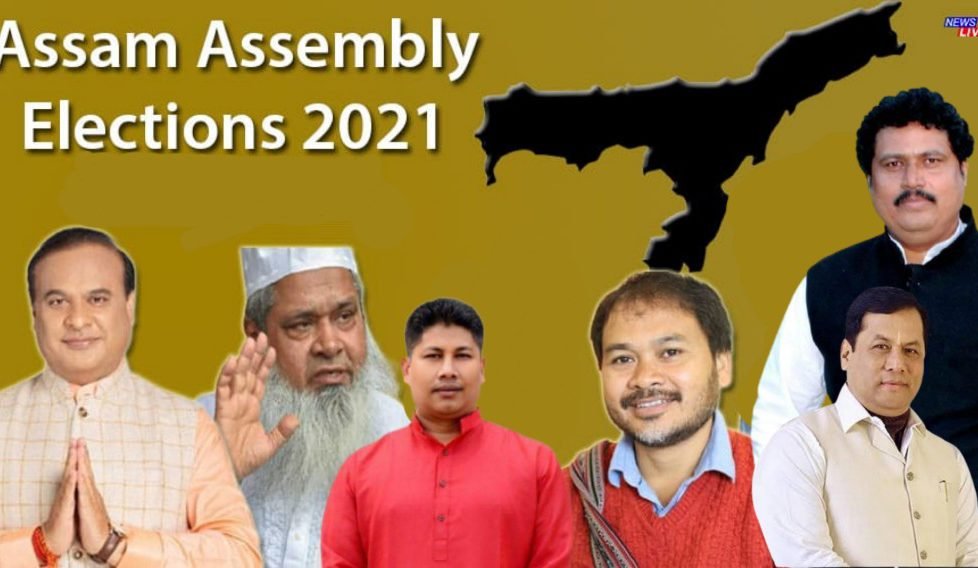

The Assam Assembly Elections of 2021 were held against the backdrop of the anti-CAA movement, the formation of new regional parties like the Asom Jatiya Parishad (AJP) and the Raijor Dal on the one hand and the Congress-AIUDF-BPF-Left alliance on the other. Both Upper Assam and the city of Guwahati were the hotbeds of the anti-CAA protests, but the BJP has registered a stupendous win in both these regions. The outcome of the elections has clearly proven that the newly formed parties did not make any substantial impact in the elections, at least in the 47 constituencies located in Upper and Northern Assam which went to the polls in the first phase on March 27. There was also a pro-incumbency mood among the voters, which helped the BJP-led alliance to a large extent despite an aggressively-led misinformation campaign on the CAA by an elite minority.
Neither the CAA nor the nascent regional outfits like the AJP and the Raijor Dal, became serious election issues. But, the message from the Bodoland Territorial Region (BTR) has been loud and clear this time, with the United People’s Party Liberal (UPPL) emerging as a viable political alternative to the Hagrama Mohilary-led Bodoland People’s Front (BPF). The results of the elections have proven that overall, the people of Upper Assam have outrightly rejected the Congress Party’s policy of entering into an alliance with the AIUDF to come to power. The alliance led to the confinement of the Congress Party’s presence mainly in the Muslim-dominated areas of Lower Assam and the Barak Valley. Overall, the AIUDF winning 16 (all Muslim MLAs) out of the 19 seats that it had contested is an alarming development, especially from the point of view of the demographic equations of those areas from where it has won.
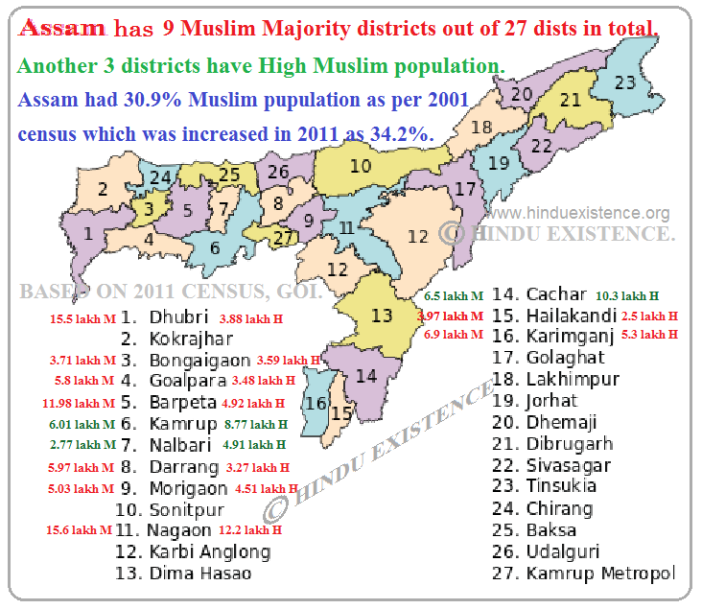
While the BJP-led NDA had won 86 seats in the 126-member Assam Legislative Assembly in 2016, its share marginally dipped to 75 this time owing to the Congress-AIUDF alliance that worked really well in the Muslim-dominated areas. Out of the total 29 seats that the Congress has won, 16 of them have gone to Muslim candidates. The total number of all-Muslim opposition MLAs (Congress+AIUDF) in the forthcoming Assam Legislative Assembly of 126 seats thereby comes to 16+16=32. Lok Sabha member and AIUDF supremo Maulana Badruddin Ajmal enjoys a considerable sway over the community of Bengali-speaking Muslims in Assam, trying to push forward his cultural and political agenda on the back of their abnormally increasing numbers over the decades. Although Maulana Ajmal has time and again tried to position himself as a “secular” and pan-Assamese leader, the fact remains that in the electoral calculus of the state, the primary strength of the AIUDF lies in being a party that openly panders to the cause of the migrant Muslims in Assam.
The consolidation of the anti-BJP vote behind the opposition ‘Grand Alliance’ (Congress+AIUDF+BPF+Left) eventually worked in favour of the AIUDF during the second and third phases of the Assembly polls in Lower Assam and the Barak Valley, where a majority of the Muslims are concentrated. The prevalent demographic composition in Central Assam, Lower Assam, and the Barak Valley helped in providing an edge to the party of perfume-baron Badruddin Ajmal in those seats where it was in the fray. The population pattern in most of these places makes things very difficult for the BJP to register a win. Even in those seats where the AIUDF was in a ‘friendly contest’ with the Congress, e.g. Jaleswar, Dalgaon, Chenga, etc. the Muslim factor stood out predominantly. Hence, even though there might have been a split in the Muslim votes, this did not help the BJP sail through. Another important factor which is often missed to be taken note of is that over the years, the Muslims have perfectly learnt the strategy of ‘tactical voting’ with the primary objective of defeating the BJP.
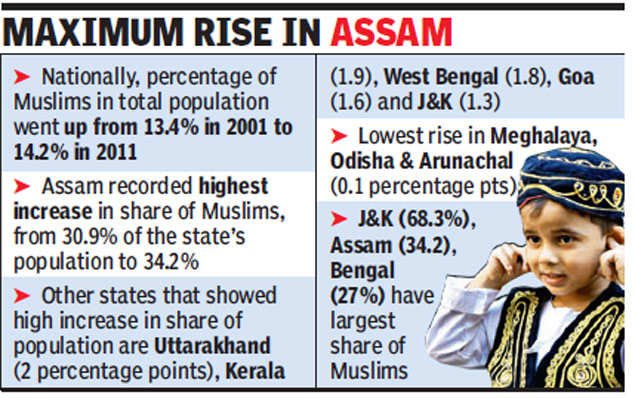
The contest between the AIUDF and the BJP+ was largely one-sided in most of the seats where there was no ‘friendly contest’ between the Congress and the AIUDF. It did not face much of a challenge from either the BJP-AGP alliance or from parties like the AJP and the Raijor Dal. The defiance of logic in favour of blind emotion by the Muslims at the time of voting has stood out most prominently in constituencies such as Batadraba and Mangaldoi, both of which have a significant concentration of Muslim population and have been won by the Congress Party. Batadraba is the birthplace of Mahapurusha Srimanta Sankardeva where the BJP had invested much time and energy since 2016 to build it as a core constituency of the state with a potential for tourism. PM Narendra Modi is also soon going to inaugurate the proposed Nagaon-Dhing connecting four-lane road, which will immensely benefit all sections of the society by reducing both time and cost. It is pertinent to mention here that the former heavyweight Congress leader Gautam Bora was deprived of the party ticket at the very last moment and the Congress had fielded a fresh candidate Sibamoni Bora, in his place this time.
The regions of Batadraba and Dhing in Nagaon district have seen large-scale infiltration of Bengali-speaking Muslims, and large areas of the Batadraba Than and Namghar (religious prayer hall of the Assamese Hindus) have seen massive land encroachments in the past several years. Interestingly, Sibamoni Bora of the Congress was earlier posted as the Block Development Officer at Batadraba. It was during an election rally at Batadraba that she went on to openly say that when she was entrusted with election duties as the BDO of the area, she let many people enter their names without any verification. She made this shocking statement to prove how she had been ‘serving’ the people of the area even before she joined active politics, when she was a government officer. In a video shared by an Assamese news channel, Sibamoni Bora hinted that if the Congress-AIUDF combine did not come to power at Batadraba, they might lose their voting rights, and hence they should vote for her instead of Angoorlata Deka, the BJP’s sitting MLA from Batadraba. In Mangaldoi too, former BJP MLA Gurujyoti Das had done some really commendable work for the all-round development of the constituency in the past five years, but he finally lost it to Basanta Das of the Congress, thanks to demographics.
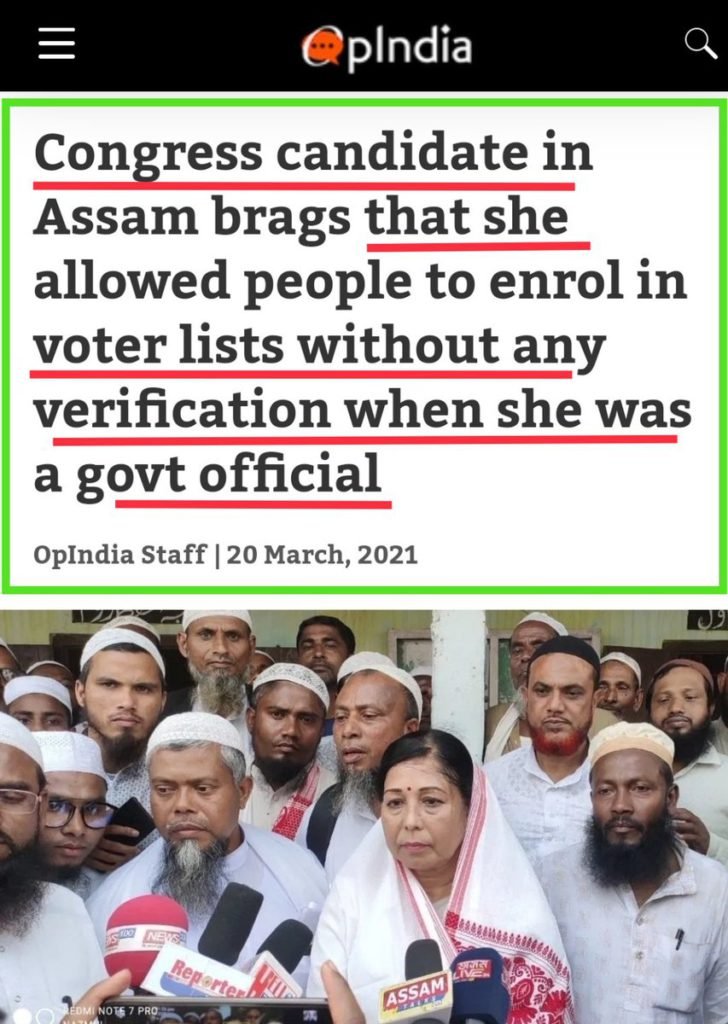
Nevertheless, despite a major show of strength by the Congress-AIUDF alliance in the elections, there have been numerous factors which helped in catapulting the BJP back to the reins of power again at Dispur. On the education front, the Sonowal Government has been making noteworthy efforts to tackle the adverse teacher-student ratio – a major bane of the schools in Assam. Although much work remains to be done to mitigate the shortfall of school teachers, a systematic provincialisation of the Primary, Lower Primary, High and Higher secondary schools was undertaken during the last five years. This has benefitted a large number of teachers in the state who had been working either on a contract or ad-hoc basis over the past several years. On February 5, 2021 appointment letters were formally handed over by CM Sarbananda Sonowal to teachers whose schools had been provincialised and also to those who had qualified through the Teachers’ Eligibility Test (TET). This was a much-needed and positive step in the direction of filling up an existing defect in the educational system of the state.
Thanks to the untiring efforts of the Bharatiya Mazdoor Sangh (BMS), the BJP has also been able to make some impressive gains among the voters of the tea garden community spread across seven districts of Upper Assam. In fact, the BJP’s entire strategy of sweeping Upper Assam has carefully hinged on the full-fledged support of this community of plantation workers and labourers, both in 2016 and this time in 2021 as well. The Congress Party has very well understood the fact that the dent made by the BJP in its traditional vote-bank of the tea garden areas has become permanent and irreversible. In its very first term itself, the State BJP Government established mass contact with the tea garden workers by having them open bank accounts under the Pradhan Mantri Jan Dhan Yojana (PMJDY) scheme, besides assisting them with cash handouts.

The BJP has also been successful in creating lakhs of beneficiaries across the state, under various schemes and programmes of both the Centre and the State, e.g. PM Ujjwala Yojana, Arunudoi Aasoni, Swami Vivekananda Assam Youth Empowerment Yojana (SVAYEM), Swahid Kushal Konwar Sarbajanin Bridha Pension Aasoni, etc. The significantly large section of the Hindi-speaking Marwari and Bihari businessmen and small traders in Upper Assam’s Dibrugarh and Tinsukia districts, have always been the BJP’s crucial vote-bank. The mindless atrocities committed on these sections of people earlier by the ULFA insurgents are still fresh in their minds. Hence, any call for the strengthening of regionalism or Jatiyotabaad in Assam does not suit the interests of this business and trading community. Political parties desirous of gaining control over the politics of Upper Assam can ignore this community only at their own peril.
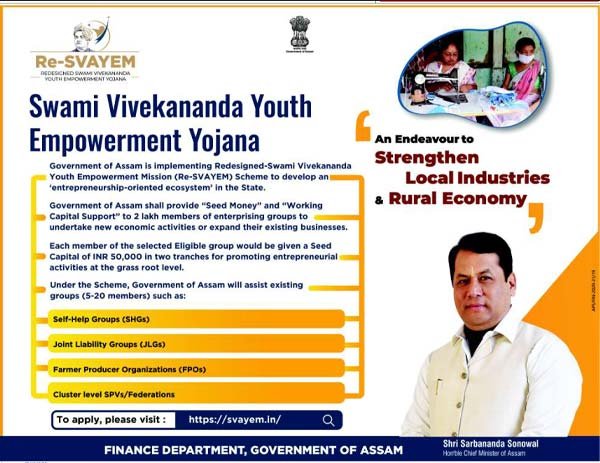
The results of the elections to the Assam Legislative Assembly, 2021 have further consolidated the position of the BJP+ in the state for the next five years. But, the humungous exercise called the National Register of Citizens (NRC) still remains unresolved. It has now hit a roadblock with the Registrar General of India (RGI) turning down a request of the Government of Assam to continue financial support for the completion of the remaining work. But, the RGI has taken a strong exception to the “inordinate delay” in completing the entire exercise, stating that the time and cost for completing the pending work and winding up the project had not been explained in the proposal by the State Government. Such developments related to the NRC have put the State Government in a poor light, as it has failed to exhibit the required pro-active stance in carrying forward the updating exercise to its logical conclusion within a reasonable time-frame. The Centre can no longer evade its responsibility of completing the NRC updating process and in no way, can the Government shirk its responsibility by presenting a half-completed NRC to the people of Assam.
DISCLAIMER: The author is solely responsible for the views expressed in this article. The author carries the responsibility for citing and/or licensing of images utilized within the text.
